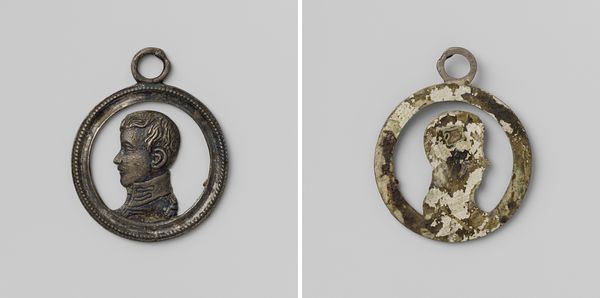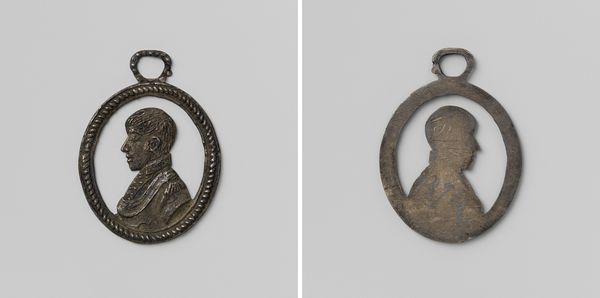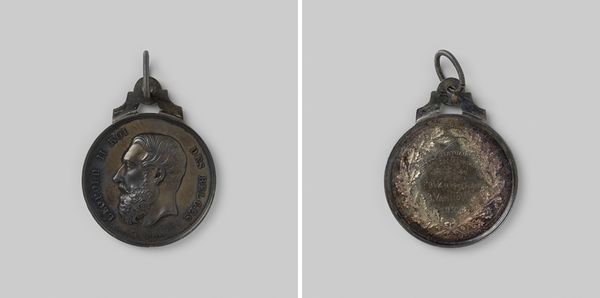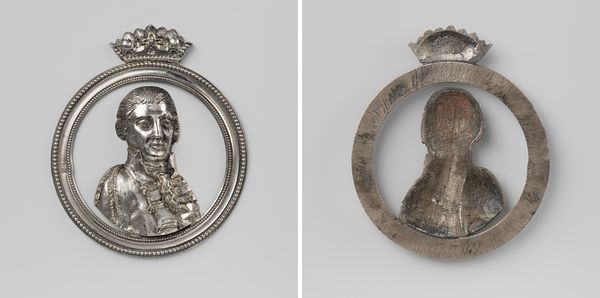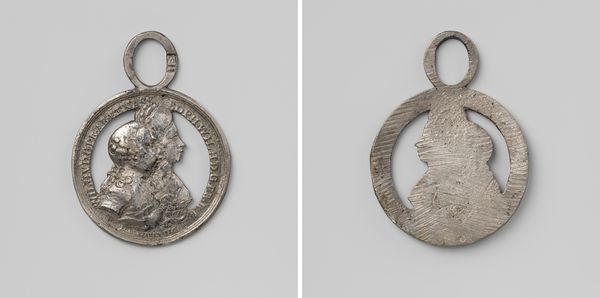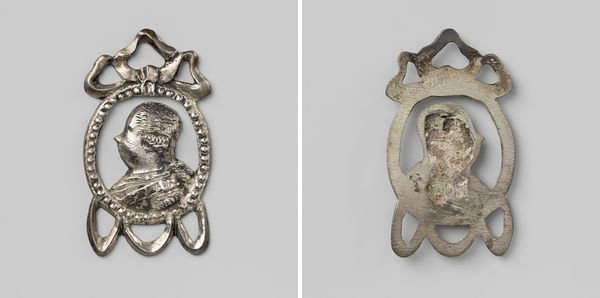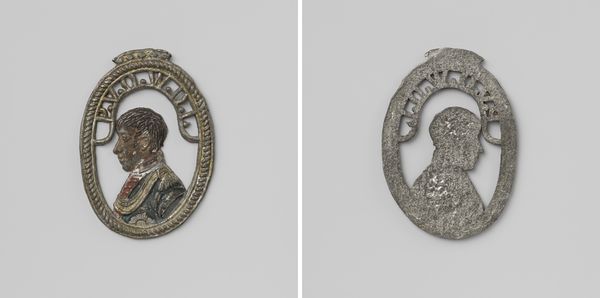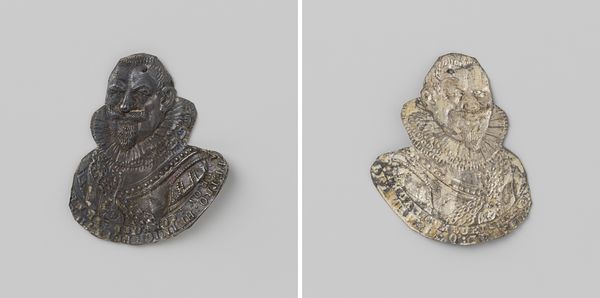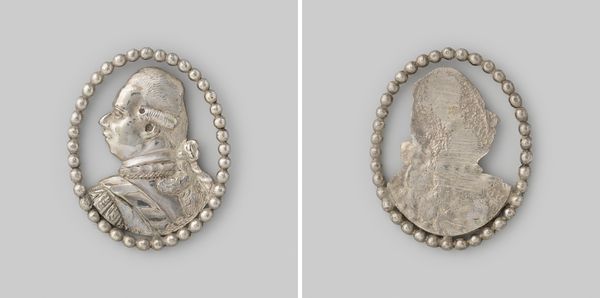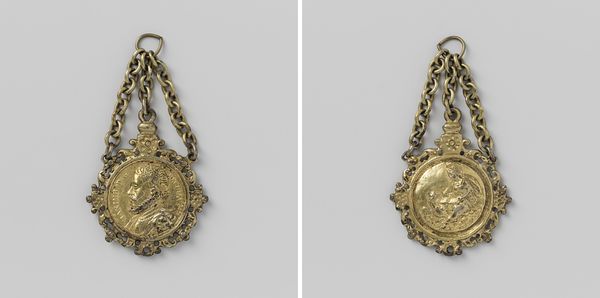
metal, relief, engraving
#
portrait
#
neoclacissism
#
metal
#
relief
#
engraving
Dimensions: diameter 3.7 cm, diameter 3 cm, weight 4.66 gr
Copyright: Rijks Museum: Open Domain
This silver pendant depicts Willem Frederik, Prince of Orange-Nassau, and was made by an anonymous artist in the Netherlands. Though undated, its subject, who became King William I in 1815, suggests a context around the formation of the modern Dutch state. Considered through a social lens, this image speaks to the political uses of portraiture. Notice how the pendant's circular frame recalls the tradition of classical portrait medals. While the pendant's small size suggests private use, the image still broadcasts power. The Prince is shown in profile, a visual code harking back to ancient coins and thereby associating him with the authority and stability of past empires. This iconography reinforced the idea of a hereditary monarchy at a time when revolutionary ideas threatened traditional power structures. Understanding this pendant requires historical research into the period's political imagery and the House of Orange-Nassau's role in Dutch history. Art history reminds us that even small, seemingly personal objects can reflect larger social and political forces.
Comments
No comments
Be the first to comment and join the conversation on the ultimate creative platform.
